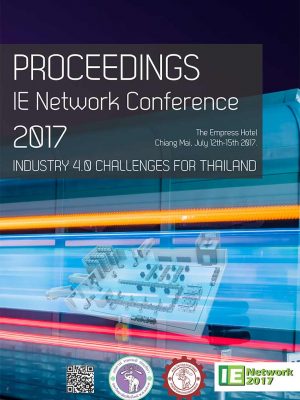Title : Impacts of Climate Change on Rainfall Erosivity in the Huai Luang Watershed
Researcher : Pheerawat Plangoen and Parmeshwar Udmale
Department : Department of Civil Engineering, Faculty of Engineering, Siam University, Bangkok, Thailand
Email : pheerawat.pla@siam.edu
Abstract : This study focuses on the impacts of climate change on rainfall erosivity in the Huai Luang watershed, Thailand. The multivariate climate models (IPCC AR5) consisting of CCSM4, CSIRO-MK3.6.0 and MRI-CGCM3 under RCP4.5 and RCP8.5 emission scenarios are analyzed. The Quantile mapping method is used as a downscaling technique to generate future precipitation scenarios which enable the estimation of future rainfall erosivity under possible changes in climatic conditions. The relationship between monthly precipitation and rainfall erosivity is used to estimate monthly rainfall erosivity under future climate scenarios. The assessment compared values of rainfall erosivity during 1982–2005 with future timescales (i.e., the 2030s, 2050s, 2070s and 2090s). The results indicate that the average of each General Circulation Model (GCM) combination shows a rise in the average annual rainfall erosivity for all four future time scales, as compared to the baseline of 8302 MJ mm ha−1 h−1 year−1, by 12% in 2030s, 24% in 2050s, 43% in 2070s and 41% in 2090s. The magnitude of change varies, depending on the GCMs (CCSM4, CSIRO-MK3.6.0, and MRI-CGCM3) and RCPs with the largest change being 82.6% (15,159 MJ mm ha−1 h−1 year−1) occurring under the MRI-CGCM3 RCP8.5 scenario in 2090s. A decrease in rainfall erosivity has been found, in comparison to the baseline by 2.3% (8114 MJ mm ha−1 h−1 year−1) for the CCSM4 RCP4.5 scenario in 2030s and 2.6% (8088 MJ mm ha−1 h−1 year−1) for the 2050s period. However, this could be considered uncertain for future rainfall erosivity estimation due to different GCMs. The results of this study are expected to help development planners and decision makers while planning and implementing suitable soil erosion and deposition control plans to adapt climate change in the Huai Luang watershed.
Key words : climate change; rainfall erosivity; precipitation; soil erosion; sedimentation
Link to article : Atmosphere Vol.8 No.8 Aug 2017, pp.1-18. https://doi.org/10.3390/atmos8080143
Journal : Atmosphere / in Scopus
Bibliography : Pheerawat Plangoen & Parmeshwar Udmale. (2017). Impacts of Climate Change on Rainfall Erosivity in the Huai Luang Watershed. Atmosphere, 8(8), 1-18. https://doi.org/10.3390/atmos8080143






